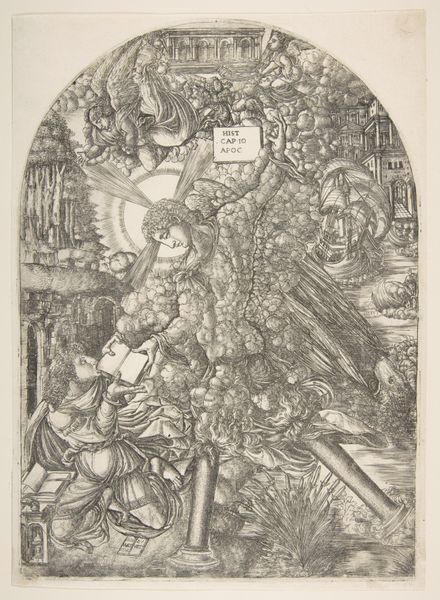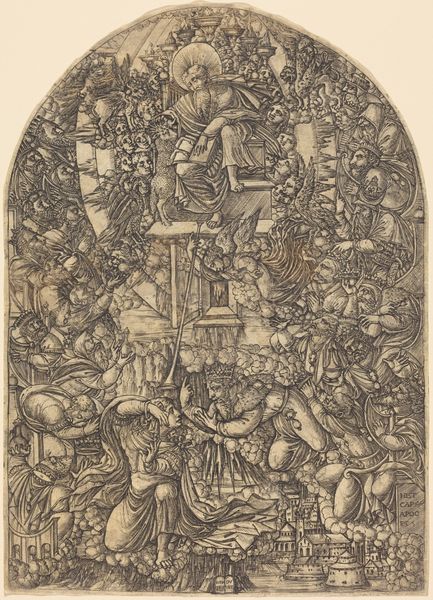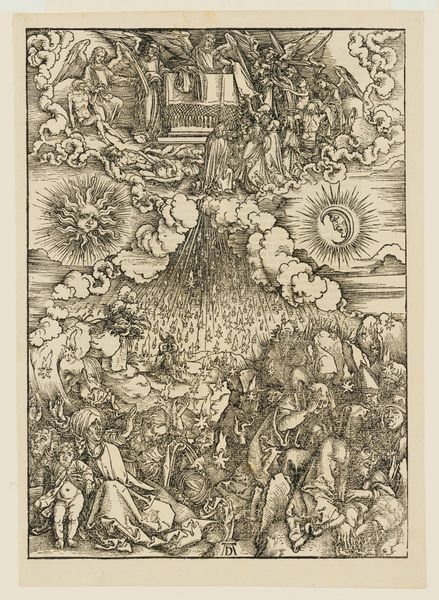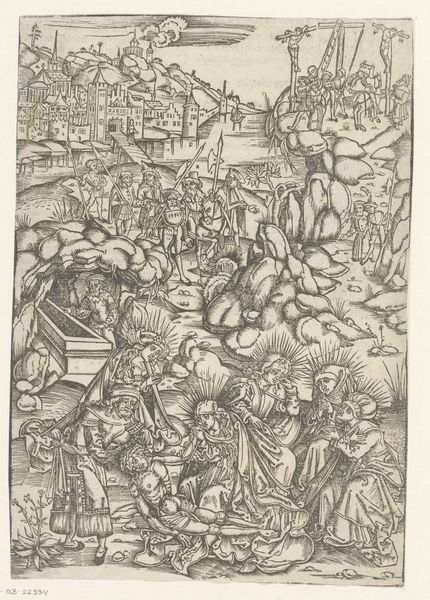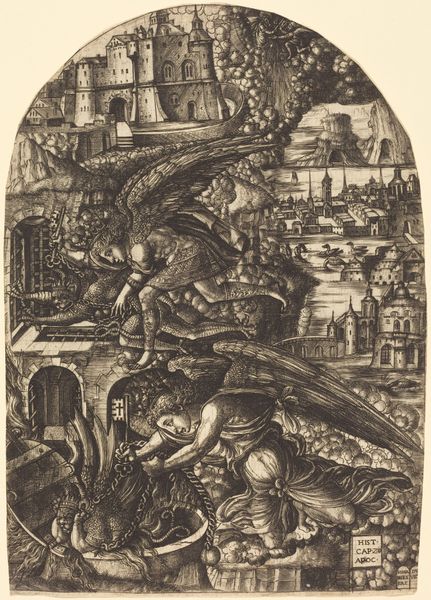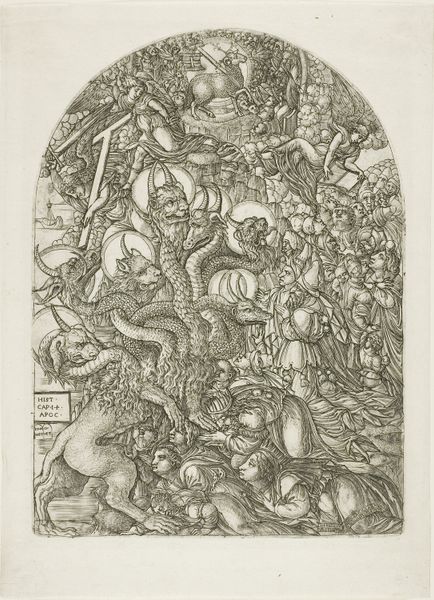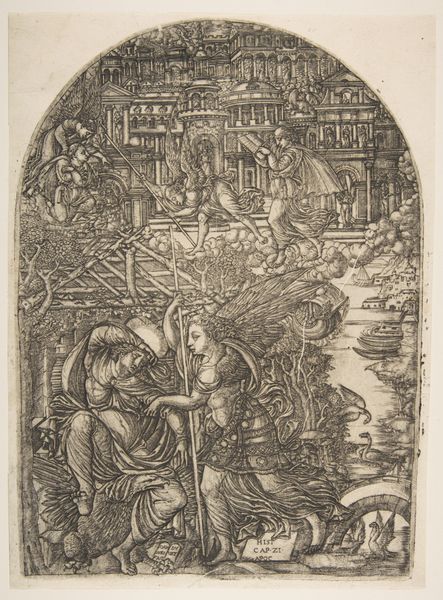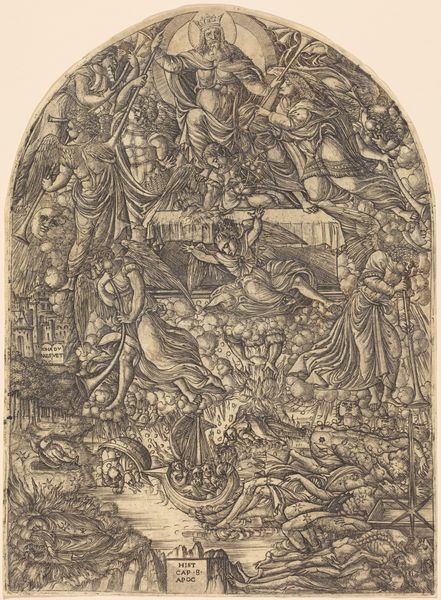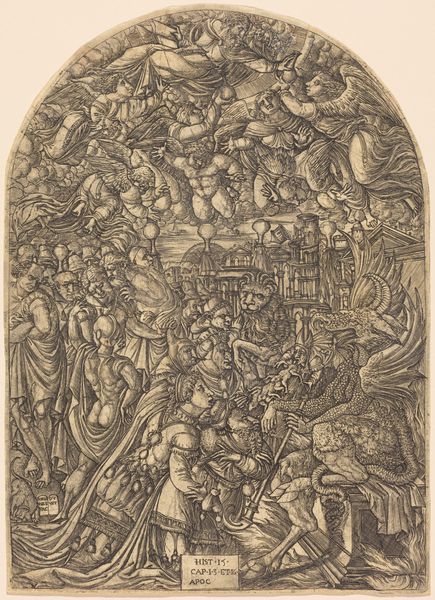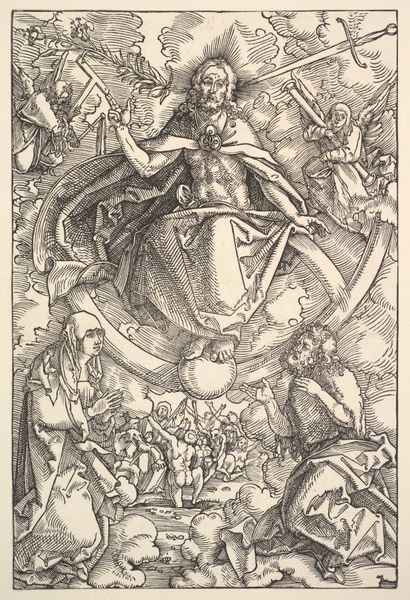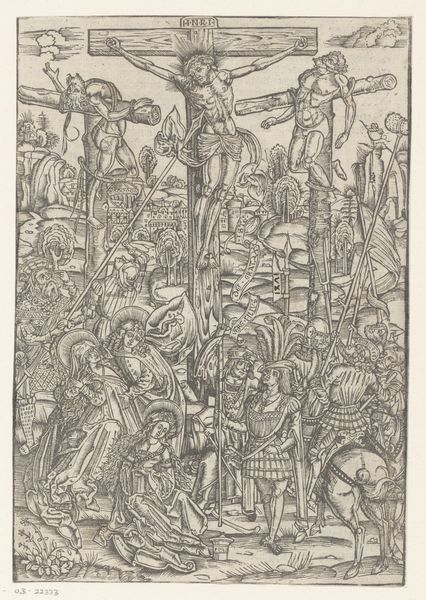
print, engraving
#
pen drawing
# print
#
mannerism
#
history-painting
#
engraving
Copyright: National Gallery of Art: CC0 1.0
Curator: This engraving, executed by Jean Duvet between 1552 and 1556, is entitled "The Angel Gives Saint John the Book to Eat." What do you make of it? Editor: Initially, the composition strikes me as rather turbulent—almost overwhelming in its density of detail. The shading appears harsh and the perspective is skewed. Curator: Duvet’s technique and compositional choices draw heavily from Mannerism, and this piece depicts a scene straight from the Book of Revelation. The angel, radiating divine light, presents the book to John, who is tasked with internalizing its message—a theme of prophetic revelation. Editor: The figures are surrounded by bizarre swirling clouds, like some sort of metaphysical cyclone. Even the architectural elements feel unstable; everything seems poised on the brink. I can’t quite place how that fits the narrative context. Curator: Consider how the act of consuming the book leads John to prophesy. These clouds and broken architectural fragments serve as visual cues, pointing to an era undergoing a paradigm shift in both religious and political spheres. The clouds can be seen as a symbol of transcendence. The image uses symbols from across eras and cultures, which also aligns with the notion of John speaking beyond his original cultural moment, his revelations ringing true into the future. Editor: It’s interesting you mention transcendence; the fractured imagery conveys the anxiety and uncertainty often intertwined with periods of change, a type of instability inherent in revelation itself, disrupting existing norms. Curator: Duvet isn't merely illustrating scripture; he’s visualizing the transformative power of divine knowledge, embedding it with the unease and wonder associated with the reception and interpretation of such potent revelations. Editor: So the piece embodies a pivotal shift in thinking by combining form, perspective, and that anxiety with an overall aesthetic which does feel timeless. Curator: Absolutely. Through visual allegories rooted in apocalyptic vision, the artwork portrays both destruction and the seeds of regeneration—a cyclical perspective integral to understanding history and prophecy. Editor: Reflecting on it now, my initial unease is precisely what makes the artwork so effective, capturing the weight and chaos inherent in revelatory moments.
Comments
No comments
Be the first to comment and join the conversation on the ultimate creative platform.
